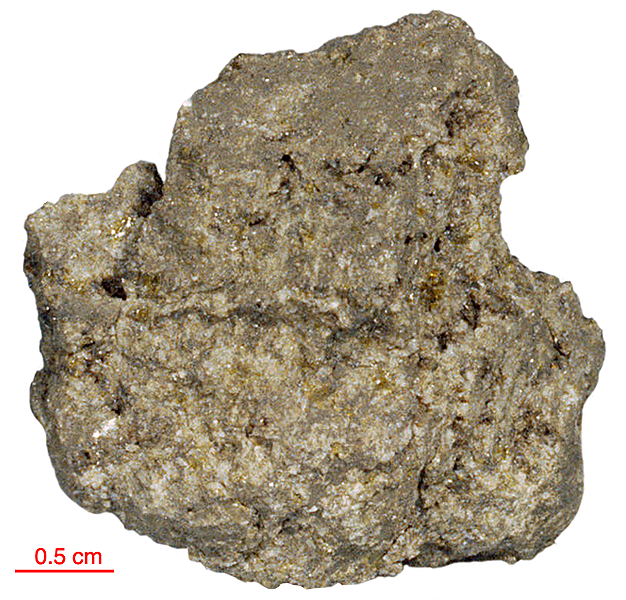
Fact sheet
15605, 15606 and 15607 are small fragments of Fe-rich mare basalt collected as >1 cm “walnuts” from the largest soil sample 15600. 15605 is coarse-grained, 15606 is medium-grained and 15607 is fine-grained. They are all examples of olivine-normative basalt with low silica content and with some olivine. The texture of 15605, 15606 and 15607 is intergranular with numerous small olivine and pyroxene grains embedded in larger plagioclase crystals. The olivines in these fragments are not phenocrysts and generally have pyroxene overgrowths. Some have chromite and metallic iron inclusions. Pyroxene is the dominant mineral and is chemically zoned. Plagioclase grains are lath-shaped and up to 2mm long. Interstitial phases include fayalite, cristobalite (see rotation 2 - two small rectangular crystals), ilmenite, spinel, troilite and K-rich glass. Chromite is chemically zoned to ulvospinel composition.
The sample weighed 14.8 grams before analysis. 15607 has been dated at 3.27±0.12 billion years (Ar/Ar).
Further details of this and other Apollo samples are here: http://curator.jsc.nasa.gov/lunar
The Apollo 15 landing site was in the Apennine Highlands, and close to Hadley Rille — a long, narrow winding valley. Approximately 76 kg of lunar material, including soil, rock, core-tube and deep-core samples, were returned to Earth.
This mission was the first flight of the Lunar Roving Vehicle which allowed the astronauts to venture further from the Lunar Module than in previous missions. During three periods of extravehicular activity, or EVA, on July 31st, and August 1st and 2nd, Scott and Irwin completed a record 18 hours, 37 minutes of exploration, travelling 17.5 miles, in the first car that humans had ever driven on the Moon.
Apollo 15 was launched on 26 July 1971.






